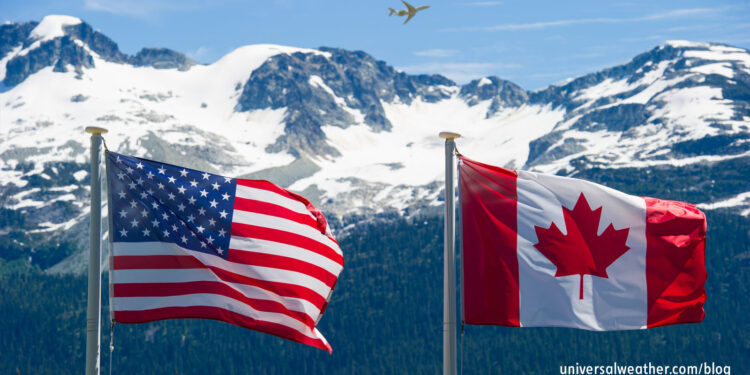ATS Route Changes for U.S. and Canada: Part 1 – What, When & How

This is part one of a two-article series on routing changes for the U.S. and Canada.
On September 9, 2014, the Federal Aviation Authority (FAA) published final rules on modification, revocation, and establishment of multiple Air Traffic Service (ATS) routes within the north central and northeast U.S. NAV CANADA has also announced routing changes for eastern Canada. The object of these changes is to move further toward the goal of Next Generation Air Transport System (NextGen) airspace management and to maximize routing efficiency and capacity of airspace.
The following is an overview of what you need to know:
1. Reasoning behind these regulatory changes
The upcoming routing changes are the result of modifications being made to Canadian airspace, as part of Canada’s Windsor-Toronto-Montreal (WTM) redesign project, as well as the FAA and global move toward NextGen. While the NextGen initiative will not be fully operational for several years, 2014 routing changes are a step toward these future airspace use goals.
2. Scope of routing changes
Routing changes will only impact the eastern U.S. and eastern Canada – from Minnesota east for U.S. airspace and from Windsor east for Canadian airspace. Federal Register Title 14 Code of Federal Regulations (14 CFR) part 71 notates all the specifics.
3. Amendments to existing routings
The FAA and NAV CANADA action amends, removes, and establishes multiple jet routes, high- and low-altitude Area Navigation (RNAV) routes and VHF omnidirectional range airways within north central and northeastern U.S. to reflect and accommodate route changes being made in Canadian airspace. This action also amends or removes certain ATS routes which have minimal or no use. Meanwhile, NAV CANADA will delete a number of existing jet airways. Associated waypoint changes – and changes in spacing between waypoints – will also go into effect.
| Routes Summary | Number of Routes |
|---|---|
| New Routes | 482 |
| Deleted Routes | 514 |
| Modified Routes | 8798 |
| Unchanged Routes | 18843 |
| Active Routes (N,D,M,-) | 28637 |
| Routes to be Copied From Staging to | 28123 |
4. Implementation is November 13, 2014
FAA and NAV CANADA routing changes became effective November 13, 2014. These changes impact all operations, both scheduled commercial and general aviation. As no notices to airmen reflecting these changes have been issued to date, it’s expected that many operators may not be aware of the route changes. As of November 13, 2014, however, all flight plans must reflect the new routings and not use old, decommissioned, airways.
5. Changes only impact FL 190 and above
As the current airspace redesign changes only affect operations at Flight Level (FL) 190 and above, operators not equipped with RNAV may continue to fly at lower FLs on V-routes.
Conclusion
As multiple routing changes are taking place within the eastern U.S. and Canada, operators need to be mindful of the new routings and required procedures. It’s important to ensure that your onboard equipment and certifications follow International Civil Aviation Organization (ICAO) 2012 mandates and are noted correctly on flight plans.
Questions?
If you have any questions about this article or would like flight planning assistance on your next trip, contact me at markmiller@univ-wea.com.
Stay tuned for Part 2, where we will discuss the routing changes and their effects on business aircraft operations.



